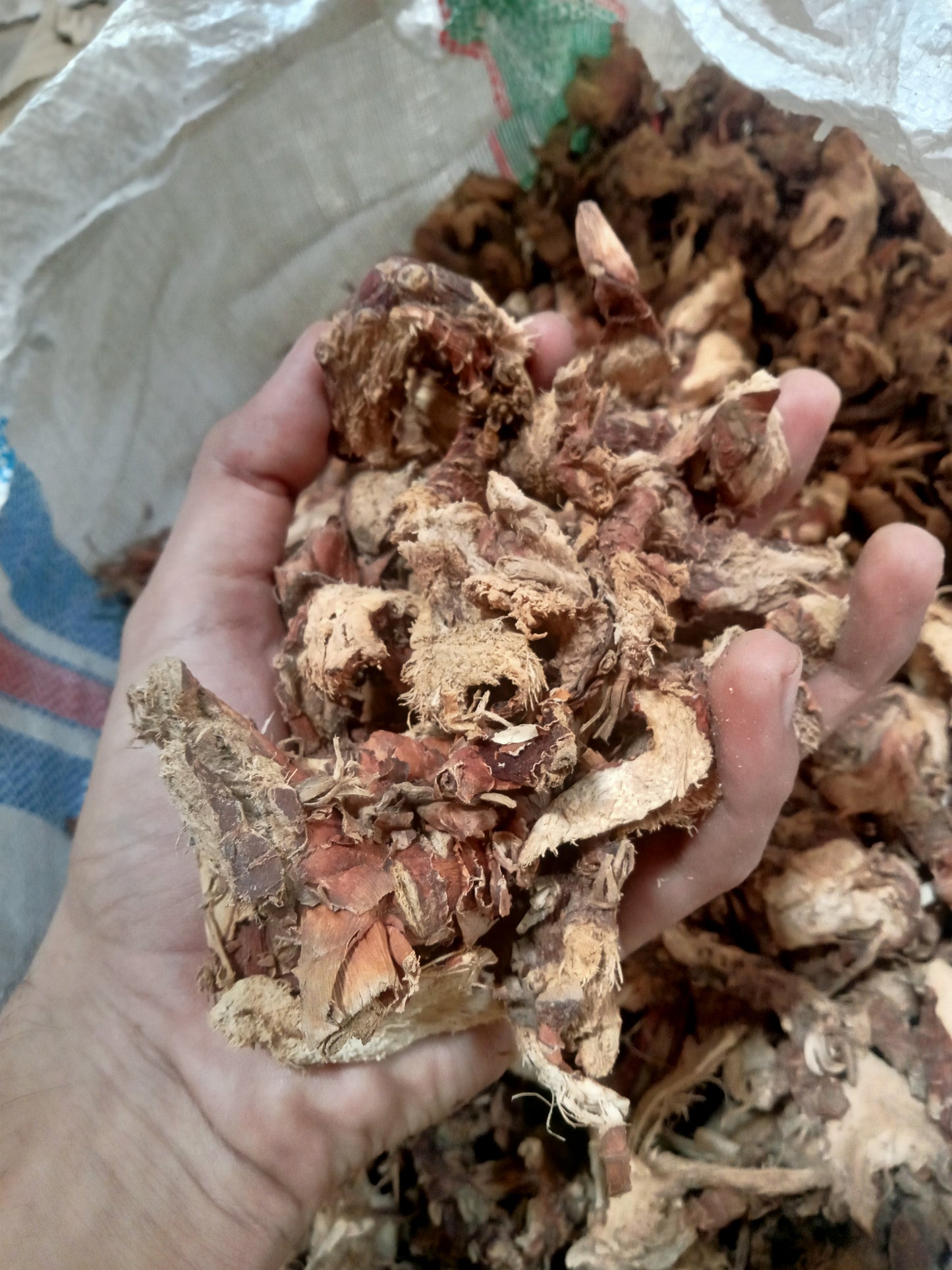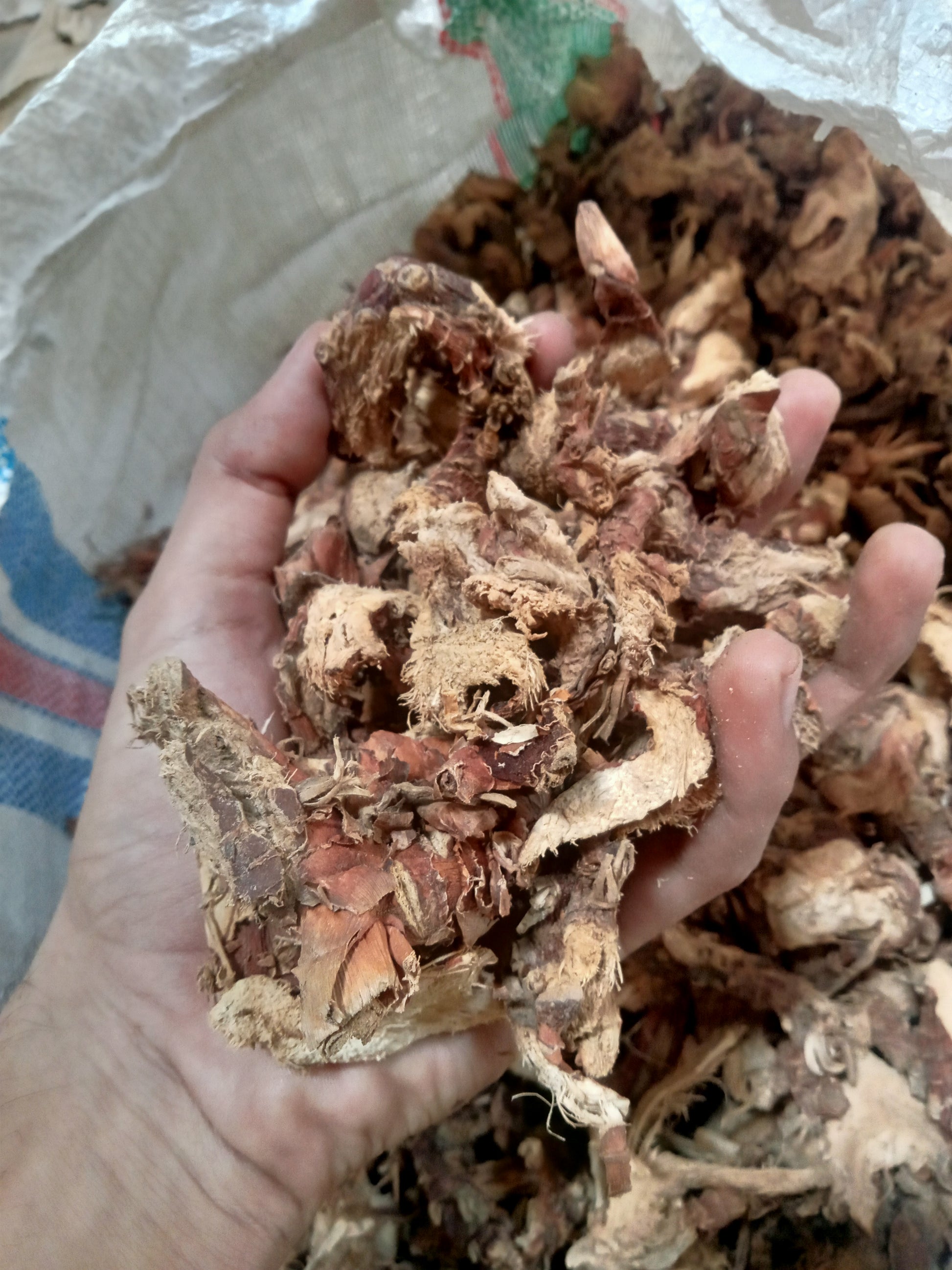starlaboratories.id
Slice dried galangal
Slice dried galangal
Dried galangal is a spice that originates from the root of the Alpinia plant, a member of the ginger family (Zingiberaceae), and is commonly used in Southeast Asian cooking. It has a unique, aromatic flavor profile and a more complex taste than ginger, with earthy, peppery, and citrus-like notes.
Here’s a closer look at dried galangal:
1. Appearance:
Shape & Size: Dried galangal typically comes in the form of slices or chunks of the root. The slices are often thin and irregular, with a pale tan to light brown color. The texture is tough and slightly fibrous.
Texture: The dried root is harder than fresh galangal. It has a rough, woody exterior with a firm, slightly spongy interior. It’s difficult to break or cut without proper tools.
Aroma: The dried root has a potent, fragrant aroma that combines peppery, woody, and citrusy notes. It's often described as having a sharper scent than fresh ginger, with a slightly camphorous or piney undertone.
2. Flavor:
Complex and Bold: The flavor of dried galangal is distinctly different from ginger, even though they share some similar qualities. It has a warm, pungent, and somewhat spicy taste but is more aromatic and slightly citrusy. Some describe it as having a hint of pine or eucalyptus with a gentle earthiness.
Spicy, Yet Softer: While it has a spiciness like ginger, dried galangal is often milder and more fragrant than fresh ginger, with a more nuanced flavor profile that can add depth to dishes.
Less Sweet than Ginger: Unlike ginger, which has a mild sweetness, galangal tends to have a sharper, more peppery and slightly bitter flavor. This makes it a great addition to savory dishes and broths.
3. Uses in Cooking:
Southeast Asian Cuisine: Dried galangal is commonly used in Thai, Indonesian, Malaysian, and other Southeast Asian cuisines. It’s often used in curry pastes, soups, and stews. One of its most iconic uses is in the famous Thai dish, Tom Yum soup.
Flavor Base: Galangal is often used as part of the aromatics in spice pastes along with ingredients like lemongrass, garlic, and shallots. It can be rehydrated and ground into a paste or steeped in liquids to infuse its flavor.
Curries: Dried galangal adds a warm, complex spiciness to curry dishes and can be used in both meat-based and vegetarian curries.
Infusions: Dried galangal can be simmered in broths, soups, and sauces, releasing its flavor into the liquid. It can also be used to flavor rice dishes or added to marinades.
4. Health Benefits:
Anti-inflammatory: Like its relative ginger, galangal has anti-inflammatory properties and has been used in traditional medicine for a variety of ailments, including digestive issues and pain relief.
Digestive Aid: Galangal is believed to help with indigestion, nausea, and bloating, much like ginger. It’s often used in herbal teas or tonics to promote digestion.
Antioxidants: Galangal also contains compounds with antioxidant properties, which may help protect the body from oxidative stress and reduce inflammation.
5. Storage and Handling:
Storage: Dried galangal should be kept in an airtight container in a cool, dry place to maintain its flavor and freshness. Properly stored, it can last for months or even years without losing potency.
Rehydration: To use dried galangal in cooking, it’s often rehydrated by soaking it in hot water for 10-15 minutes before being sliced or ground into a paste. You can also simmer it directly in soups and stews, where it will release its flavor into the broth.
Order Now!
Budi Harto
Star Laboratories
Pergudangan Mutiara Margomulyo Indah C 15, Surabaya, Indonesia
Whatsapp/ Phone : +62 816 525 328
USD Price : $1150/ton

Image with text
Pair text with an image to focus on your chosen product, collection, or blog post. Add details on availability, style, or even provide a review.

